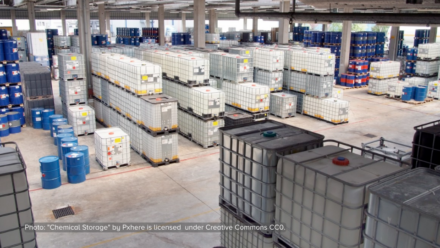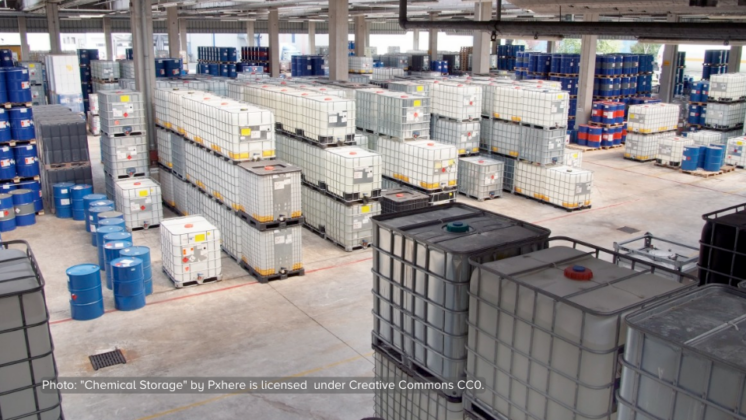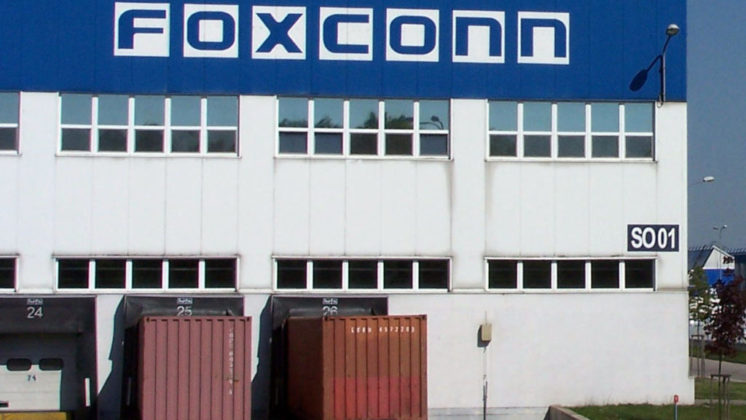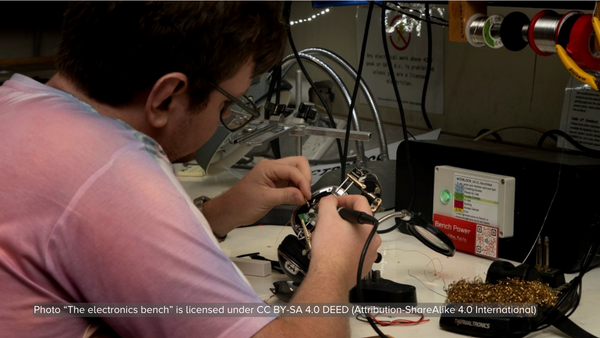The publication “Where are WEEE in Africa” was developed in the framework of the project entitled «Building local capacity to address the flow of e-wastes and electrical and electronic products destined for re-use in selected African countries and to augment the sustainable management of resources through the recovery of materials in e-wastes». Conclusions and recommendations are presented, primarily for stakeholders in the project partner countries, but also for stakeholders in other African countries and those who are concerned with the e-waste issue and are interested in seeking sustainable solutions.
Executive Summary below. Click here for full report.
Growing role of ICT in Africa
Information Communication Technology (ICT) has revolutionized modern living, international business, global governance, communication, entertainment, transport, education, and health care. This has been driven by unprecedented high volumes of production and usage of consumer electronic products, in particular, personal computers, mobile phones, and television sets. Access to ICT has been identified as an indicator of a country’s economic and social development. The difference in access to ICT between developed and developing countries is commonly referred to as the “digital divide”. Africa has been undergoing rapid ICT transformation in recent years, attempting to bridge this divide by importing second-hand or used computers, mobile phones, and TV
sets from developed countries. The countries of the region, however, lack the infrastructure and resources for the environmentally sound management (ESM) of electrical and electronic waste (e-waste) arising when such imports reach their end-of-life.
What is in e-waste?
The uncontrolled large quantities of e-waste generated by this electrical and electronic equipment (EEE) are of particular concern as EEE contains hazardous substances (e.g. heavy metals such as mercury and lead, and endocrine disrupting substances such as brominated flame retardants). On the other hand, EEE also contains materials of strategic value such as indium and palladium; and precious metals such as gold, copper and silver: these can be recovered and recycled, thereby serving as a valuable source of secondary raw materials, reducing pressure on scarce natural resources, as well as minimizing the overall environmental footprint.
Trends of EE imports, use, and e-waste generation in West Africa
National e-waste assessments prepared in Benin, Côte d’Ivoire, Ghana, Liberia, and Nigeria investigated the situation with regard to e-waste looking into, inter alia, trends of EEE imports, use and e-waste generation. These trends are analyzed in the scope of more general economic and societal indicators, taking into account factors such as the Human Development Index, electrification rate, GDP per capita and the number of mobile phone subscribers and internet users. The use of EEE is still low in Africa compared to other countries in the world, but it is growing at a staggering pace. In the last decade for instance, the penetration rate of personal computers has increased by a factor of 10, while the number of mobile phone subscribers has increased by a factor of 100. The penetration rate2 signifies that due to the intense trade of used EEE, people have better access to lower priced EEE. From this perspective, the import and trade of used EEE
is in support of the UN Millennium Development Goals as a means to foster the use of ICT for sustainable development. Aside from domestic consumption, the e-waste problem in West Africa is exacerbated by an ongoing stream of used EEE from industrialized countries. Although the majority of this imported equipment is destined for re-use after testing and repair, there are significant volumes that prove unsuitable for re-use and further add to local e-waste generation. Statistical data and field research suggest that West Africa serves as the major trading route of used
EEE into the African continent, with Ghana and Nigeria as the main import hubs. Despite difficulties in obtaining data on new and used EEE as statistical data does not distinguish between these two categories of products, the studies in Ghana, for example, revealed that in 2009 around 70% of all imports were used EEE. 30% of the used EEE imported was determined to be non-functioning (hence should have been defined as e-waste): half of this amount was repaired locally and sold to consumers and the other half was unrepairable. It is unclear how much of the remaining imported used EEE functioned for a reasonable time after it was sold. This so called “near-end-of-life” equipment can be another major source of e-waste which was imported into
West African countries as equipment but turned into waste in a relatively short t ime. However, it is assumed that in 2010 between 50 - 85% of e-waste was domestically generated out of the consumption of new or used EEE of good quality with a reasonable life-span. For the five selected West African countries, this is between 650,000 and 1,000,000 tonnes of domestic e-waste generated per annum, which at a certain point needs to be managed. Countries with high imports of used EEE, like Ghana and Nigeria, generate the highest volumes of e-waste.
This is due to the direct import of non-functioning and non-repairable used EEE or e-waste and the lowerlife-span of (functioning) used EEE compared to new EEE. It should be mentioned that in absolute numbers, Nigeria dominates the region in the total amount of used and new EEE imports, total number of EEE in use and the subsequent total amount of e-waste generated. Collection rates vary among the countries and reach up to 95% in the case of Ghana. Almost all of the collected material reaches the informal recycling sector.
Impacts of recycling practices on human health, the environment and climate change
Informal activities in the e-waste recycling chain are present in all of the countries studied and include collection, manual dismantling, open burning to recover metals and open dumping of residual fractions. While in some countries these activities are performed by individuals with a low material throughput (Benin and Liberia), Côte d’Ivoire, Ghana and Nigeria reveal an organized informal sector with medium to high volumes of processed materials (e.g.steel, aluminum and copper). Emissions from informal recycling activities are problematic in these countries and their impacts on human health and the environment are evident. The major environmental and human health impacts from recycling practices in West Africa result mainly from the processes of dismantling, material recovery and final disposal. During collection, refurbishment and repair of EEE, negative impacts are present, but are generally at a significantly lower level. The burning of cables is seen as one practice with the most direct severe impact on human health and the environment. Bearing in mind that cable burning from EEE disassembly most probably occurs in all West African countries, this is a major source of dioxin emissions.
A whole range of valuable metals like palladium, gold, silver, indium and germanium that are contained in EEE are lost if not recovered at an early stage of waste treatment. Current recycling practices mainly focus on the recovery of steel, aluminum and copper and are quite inefficient for other metals. Primary production, i.e. mining, concentrating, smelting and refining, especially of precious and rare metals, is energy intensive and has a significant impact on climate change as a result of high carbon dioxide (CO2) emissions. “Mining” our old computers to recover the metals contained therein – if performed in an environmentally sound manner – requires only a fraction of this energy input. Furthermore, the environmentally sound management of end of-life refrigerators, air conditioners and similar equipment is significant in mitigating the climate change impacts as the ozone depleting substances in these devices, such as chlorofluorocarbons and hydrochloroflyorocarbons, have a high global warming potential.
Socio-economic aspects of the e-waste sector in Ghana and Nigeria
Another important aspect of e-waste is found in its socio-economic dimension. In-depth socio-economic studies were carried out in Nigeria and Ghana to investigate the operations and sustainability impacts of the refurbishing and e-waste recycling sectors. In addition, currently practiced recycling technologies were compared with best available technologies and analyzed on the basis of their applicability in the West African context. As a result, “best applicable technologies”3 were proposed for implementation in Nigeria and Ghana. Here, particular emphasis was on
systems and technologies that yield multiple gains in the field of environmen tal protection, working conditions and employment creation, as well as in general economic terms. The research revealed that there are some specific similarities between the refurbishing and recycling sectors in Nigeria and Ghana. In both countries, there is a well-organized repair and refurbishing sector that is focused on used equipment either from imports or from domestic sources such as businesses and households. In both Accra (Ghana) and Lagos (Nigeria), this refurbishing sector generates income for more than 30,000 people. The refurbishing sector operates partly under formal conditions as many of the enterprises that serve this sector are registered with the local authorities and pay taxes to local and regional administrations. In contrast, collection and recycling of e-waste is almost exclusively carried out by non-registered individuals widely
referred to as “scavengers”. In Nigeria and Ghana, informal coll ection and recycling is mostly carried out by migrants from the rural areas in the north of the respective countries, where populations have few alternatives to small-scale agriculture and where rainfall variability causes food shortages. Research also focused on the conditions of workers in the e-waste sector. For example, in the informal collection and recycling of e-waste, daily revenues vary greatly from between US$ 0.22 and US$ 9.50. This income has, in most cases, to be shared with other family members and is only earned on economically active days and not during periods of sickness or other emergencies. Therefore, it is concluded that a significant segment of e-waste workers
in Nigeria and Ghana live below the internationally defined poverty line of US$ 1.25 per day. In the refurbishing sector, salaries range between US$ 2.20 and US$ 22 per day. Here, the highest incomes are achieved by workshop owners, while employees typically earn less than US$ 4.00 per day. The comparison of currently practiced recycling technologies with best available recycling technologies showed that there is considerable potential for improvement in the field of ICT recycling. For example, in the countries studied, discarded equipment such as desktop PCs are mainly dismantled to recover steel, aluminum and copper. However, precious metals contained in printed wiring boards (PWBs) of such equipment are rarely collected and when they are, are sold below world market prices to traders that organize exports to Asian recycling facilities. Hence there is an opportunity for West African countries to gather higher volumes of PWBs in order to be able
to participate in a fair international commodity trade. In the recycling of ICT equi ment, adequate volumes and quality levels can be achieved by manual dismantling and without significant investment in processing machinery. Appropriate health and safety measures for those involved in recycling, as well as environmentally sound practices, should be ensured. Thus optimized ICT recycling could be a key area of sustainable e-waste management in Nigeria and Ghana that has the potential to reduce environmental impacts, as well as generating jobs and sustainable
incomes.
Flows of EE and e-waste between Europe and West Africa
As part of the overview of the trade chain of used EEE between developed countries and West Africa, the studies also examined flows of EEE (and in some cases e-waste) between selected European countries and West Africa. When analyzing the pathways of used EEE in Europe from the formal to the informal sector, it was found that brokers and traders are key players in this regard. Generally, the EEE export market is quite diverse, ranging from small familybased networks to large and well-organized trading firms. Often, immigrants or temporary residents from African countries engage in creating small trading businesses serving the European – African trade routes. Traders of used vehicles also play a role in this trade as used EEE and e-waste is often co-loaded with used cars and trucks destined for export to West Africa. The ports of Amsterdam and Antwerp were used as examples of gateways for used EEE. In both ports, used EEE
is often declared as “second-hand goods”, “private goods”, “for charities”, “for personal use”, “miscellaneous” and “effets personnels” (referring to EEE as second-hand goods, etc.). In order to disguise illegal exports, even the labeling of used EEE itself is sometimes manipulated (e.g. false codes for used refrigerators or removal of generators of used refrigerators in order to classify them as “not-containing CFCs”) and customs declarations are given to the competent authorities only on the day the ocean carrier is to leave the port. In Antwerp, there are even agents specialized in the export of used EEE. Both the Dutch and Belgian port authorities emphasize that personnel and financial limitations are severe obstacles to achieving better export control of the problematic shipments of used and end-of life EEE. This study offers interesting findings on flows of used EEE and e-waste between Europe and West Africa. For example, Nigeria was found to be the most dominant importing country of EEE and vehicles (both new and used), followed by Ghana, whereas the UK is the dominant exporting country for EEE, followed with a large gap by France and Germany.
Transboundary movements of used EE and e-waste
Transboundary movements of e-waste are subject to the control mechanism under the Basel Convention on the Control of Transboundary Movements of Hazardous Wastes and Their Disposal. E-waste is listed in Annex VIII as A1180 (hazardous waste) and Annex IX as B1110 (non-hazardous waste) of the Convention. According to its provisions, transboundary movements of hazardous wastes can only take place after the prior informed consent procedure has been followed and all states involved have given their consent to the transboundary movement. Shipments which do not meet these requirements are illegal and such traffic is criminalized under the Convention. In addition, the provisions of the Waste Shipment Regulation of the European Union label the export of waste with hazardous characteristics from Europe to any non–OECD country as illegal. In the case of transboundary movements of used EEE and e-waste, there are several challenges related to the enforcement of Basel provisions. This includes the challenges of clear distinction between used EEE and e-waste and between hazardous and non-hazardous waste, as well as the overall challenge of monitoring and enforcing the Basel Convention and the Waste Shipment Regulation.
Conclusions and recommendations
Knowledge generated through the numerous studies and activities of the E-waste Africa project is presented in the form of conclusions and recommendations primarily for stakeholders in the project partner countries, but also for stakeholders in other African countries and those who are concerned with the e-waste issue and are interested in seeking sustainable solutions.
One major challenge for West African countries is to prevent the import of e-waste and near-end-of-life equipment without hampering the socio-economically valuable trade of used EEE of good quality. In addition, high volumes of domestically generated e-waste require well-functioning local take-back and recycling systems. Challenges include the establishment of appropriate collection strategies, ensuring that high volumes of valuable and non-valuable waste fractions are collected equally and that those fractions reach appropriate treatment and disposal facilities. In addition,
connecting informal collectors to a formal recycling structure is pivotal, along with appropriate capacity building and training. Locally adapted recycling technologies for West Africa should make use of the abundant labor force instead of deploying expensive shredding and sorting machinery. To ensure a maximum yield of valuable recycling fractions, West African recyclers should be encouraged to interlink with international recycling companies and networks to develop market outlets for their pre-processed e-waste fractions for a maximized return of value for secondary
raw materials. A sustainable e-waste management system would also need an adequate financing scheme, a level playing field and appropriate market incentives. It is thought that similar to policies in OECD countries, e-waste recycling systems in Africa could be developed in line with the principle of Extended Producer Responsibility.











